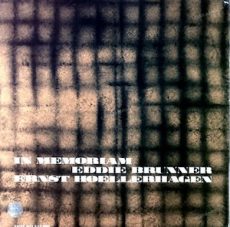
Daily Dose Of Jazz…
Eduard “Eddie” Brunner was born on July 19, 1912 in Zürich, Switzerland. He learned to play clarinet, piano, and tenor and alto saxophone before beginning to perform professionally. In the early 1930s he worked with Rene Dumont, Jack and Louis de Vries, and Marek Weber.
By 1936 he moved to Paris, France and recorded under his own name as well as with Goldene Sieben and Louis Bacon. He returned to Switzerland once World War II broke out. Brunner joined Teddy Stauffer’s band, and in 1941 took over leadership of the group until 1947, when it dissolved.
He led a new six-piece ensemble in 1948, and recorded for radio and television broadcasts in the 1950s.
Reedist and bandleader Eddie Brunner died on July 18, 1960 in his city of birth.
More Posts: bandleader,clarinet,history,instrumental,jazz,music,piano,saxophone
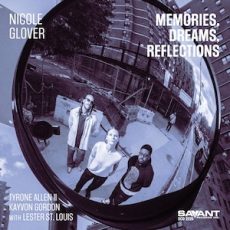
Daily Dose Of Jazz…
Nicole Glover was born on July 18, 1991 in Portland, Oregon. Her musical journey began when her father introduced her to improvised music at a young age. She started playing the clarinet at the age of ten, transitioning to tenor saxophone the following year. Her interest and curiosity for music blossomed in high school, becoming involved in a variety of performance groups, both within her school and in the community.
Nicole was chosen to be one of nineteen students from across the nation for the Next Generation Jazz Orchestra, who embarked on a national tour that involved performances with Bobby Watson and Julian Lage, and concluded with a performance at the Monterey Jazz Festival with Wynton Marsalis.
After studying at William Paterson University, in 2011 Nicole returned to Portland where she was invited to record on Esperanza Spaulding’s Grammy-award winning album Radio Music Society. She now performs in multiple groups with multi-instrumentalist George Colligan, as well as her own jazz trio and several other improvisational ensembles, such as, the Alan Jones Storyline Sextet, Thomas Barber’s Spiral Road, and the Kerry Politzer Quintet.
2015 saw Glover releasing her debut album First Record, featuring pianist and trumpeter George Colligan, bassist Jonathan Lakey and drummer Alan Jones. She leads her own trio with bassist Tyrone Allen II and drummer Kayvon Gordon. This was followed with the release of Plays, and HighNote-Savant Records Memories, Dreams, Reflections.
Throughout her musical career, Nicole has performed with Mulgrew Miller, Esperanza Spalding, Kenny Garrett, George Colligan, Geoffrey Keezer, Bennie Maupin, Bobby Watson, Mike Clark, Carl Allen, Kenny Washington, Al Foster, Victor Lewis, Lenny White, Joe Farnsworth, Reggie Workman, Dee Dee Bridgewater, Ben Wolfe, Bill Stewart, Essiet Essiet, Mel Brown, Julian Lage, Obo Addy, Rob Scheps, Red Holloway, Terell Stafford, Helen Sung, Dana Hall, Scotty Barnhart, and Thara Memory, to name a few.
Glover is a member of Ural Thomas and Pain, Artemis led by Renee Rosnes, Ursa Major led by Christian McBride, and has toured with Jazz at Lincoln Center Orchestra.Tenor saxophonist, bandleader, composer, and educator Nicole Glover, who is on faculty at the Manhattan School of Music and has taught masterclasses and private lessons to students around the world, continues to fit performance in her busy schedule.
More Posts: bandleader,educator,history,instrumental,jazz,music,saxophone
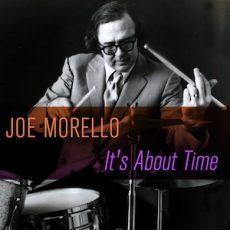
Daily Dose Of Jazz…
Joseph Albert Morello was born July 17, 1928 in Springfield, Massachusetts of French and Italian ancestry. Suffering from partial vision from birth, he devoted himself to indoor activities. He began studying the violin when he was six and three years later, he was a featured soloist with the Boston Symphony Orchestra, playing Mendelssohn’s Violin Concerto, and again three years later.
By fifteen he met the violinist Jascha Heifetz, decided that he would never be able to equal Heifetz’s sound and switched to drumming. He first studied with show drummer Joe Sefcik and then with educator and author George Lawrence Stone. He was so impressed with Morello’s ideas that he incorporated them into his next book. Further study led him to Radio City Music Hall percussionist, Billy Gladstone.
Moving to New York City, he worked with Johnny Smith, Tal Farlow, Stan Kenton, Phil Woods, Sal Salvador, Marian McPartland, Jay McShann, Art Pepper, and Howard McGhee. After a period of playing in McPartland’s trio, Joe declined invitations from Benny Goodman and Tommy Dorsey, favoring a two-month tour with the Dave Brubeck Quartet in 1955. This turned into a performing and recording residency that lasted for well over a decade, departing in 1967.
As an educator Morello became an in-demand clinician, teacher and bandleader, whose many of his former students went on to become well known in their chosen genres. He authored several drum books, including Master Studies, published by Modern Drummer Publications, made instructional videos and received many awards, and was inducted into several Halls of Fame.
Drummer Joe Morello, who appeared on over 120 albums, died at his home in Irvington, New Jersey on March 12, 2011 at the age of 82.
More Posts: author,bandleader,drums,educator,history,instrumental,jazz,music
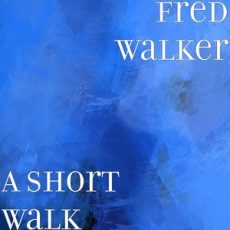
Daily Dose Of Jazz…
Frederick Walker was born in St. Louis, Missouri on July 16, 1942. He received his high school equivalency from the United State Armed Forces Institute, then went on to study criminal justice for two years from 1873 to 1975 at St. Louis Community College.
In 1980, Fred founded Star City/St. Louis Records and produced two 45 releases with the Nightwind Band titled Later For That and Why Can’t We. He eventually formed Star City Enterprise encompassing Star City Productions, Star City/St. Louis Records and Saxy Jazz.
His Star City Productions deals with the production of recorded music and the small studio offers digital recording capabilities, CD label production, graphic design and other services related to the production of recorded sound. It also offers copyright registration assistance, music society membership, ISRC encoding and much more.
Soprano and alto saxophonist Fred Walker continues to perform, record and grow his company with new individuals and groups signing on.
More Posts: bandleader,history,instrumental,jazz,music,record producer,saxophone
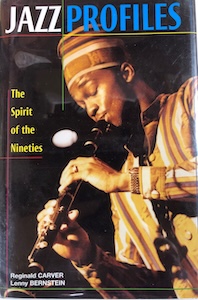
On The Bookshelf
Jazz historian Reginald Carter and jazz photographer Lenny Bernstein present an introduction to the young lions of jazz. Most of these musicians have decided to forgo post-1960s jazz developments, instead mining the treasures of the bop/hard-bop masters. The profiles include a short biography, photo notes, a wonderful black-and-white photograph, recent interview excerpts, and a select discography.
The artists’ thoughts on the upswing in jazz’s popularity and on balancing performing, composing, and recording, provide an overall sense of where these musicians find themselves within the jazz culture.
Arranged according to instrumental groupings, the book features such musicians as Terence Blanchard, Roy Hargrove, Wynton Marsalis, Nicholas Payton, Wallace Roney, Branford Marsalis, James Carter, Joshua Redman, Bobby Watson, Don Byron, Craig Handy, Steve Turre, Bill Frisell, Russell Malone, Geri Allen, Cyrus Chestnut, Marcus Roberts, Christian McBride, Reginald Veal, Cindy Blackman, Jeff “Tain” Watts, and vocalists Dee Dee Bridgewater and Kevin Mahogany.
In this compendium we see those forty musicians who have individually taken the music to its evolutionary continuance.


